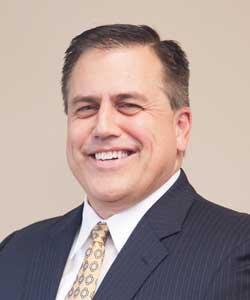I was drawn to accounting because it’s black and white, accounts have to balance and it’s far more logical than economics. When I decided to pursue the subject in college, it looked like a good profession and one that I was interested in. I never imagined that 20 years later, I would be the burnt-out owner of a CPA practice.
At the time, I had been trying to build my accounting firm while also running a small software company which sold accounting systems.
Lacking the extra dollars to invest in staff, I hired just one employee for the CPA firm after a year of doing everything myself and then slowly added more staff. For the amount of time I was working—70 to 80 hours a week year-round—I wasn’t making much money. I shoveled most of my income back into the business and took out very little for myself. During November and December, the tough cash flow months for most CPA firms, I had to borrow money to stay afloat. Personally, I was earning less as a practice owner than I had been as a salaried employee—it wasn’t pretty.
On top of the business pressures, my wife and I were blending our two families—two sets of children from previous marriages—which came with its own challenges. But no matter what, I always made time for the kids; I coached hockey and soccer and worked later to make up the time missed. My wife wanted me home more but she knew the drill. Her parents had also started a business and worked long hours before reaping the rewards; and so that’s what we expected. But the lack of sleep, wear and tear of long hours and ongoing stress weighed on me.
At the time, I received a postcard from Sterling which promised me more free time, happier clients and higher income. I thought, “That’s what I want” and gave them a call. After watching their DVD, speaking to several references and receiving a free consultation, I became a client.
After going through 14 days of training, we decided to get started. Sterling sent two specialist consultants to our offices to implement their program basics—it was a huge success. We worked out my goals for the practice and its mission statement so I would have a compass direction to follow. The practice hadn’t had much in place in terms of procedures so the consultants set up systems to streamline communications, workflow and production. We also began using Sterling’s management by statistics which allowed me to objectively evaluate the staff, especially the non-billable admin people. Because I had put everything into the billable staff, the admin people usually got the short end of the stick. Using statistics, I could see how productive they actually were. Sterling also introduced us to their personnel testing so we could hire quality people. As we progressed through the program and continued our consultations, the staff became more accountable and I did a better job of managing them and the practice.
My consultant further lightened my load by helping sort out some family issues. The kids had been going through their own ups and downs and needed attention. I was also taking care of my disabled father and 97-year old grandmother at the same time. My consultant and I worked out solutions that cut down my personal “to do” lists.
The firm was poised to thrive when disaster struck: During a high-speed chase, a sheriff’s car went out of control, careened off the road and flew into our building, setting it on fire. Miraculously, no one was hurt including the driver, but the building was unusable. I had the staff work from home until we could find a temporary office—it was a very tough situation.
Once we relocated to the temporary office space, Sterling again sent a consultant to help get us back on track and address the issues which would take us to the next level. We put an office manager in place and trained her; a lot of those duties had fallen to me and I knew we couldn’t grow if I continued to do them. We also devised a bonus plan for the production staff based on weekly quotas. We had been using monthly quotas but managing weekly enabled us to get a jump on any issues much sooner. These actions firmly shored up our production.
I continue working with my consultant to build my firm more and more. It helps to have a professional I can bounce ideas off of and discuss the pros and cons. Because she has worked with many other accounting practices, she may suggest something another firm is doing to see if it makes sense for me. She also encourages me to attend Sterling’s two-day conferences with my staff for additional training. While there, I stop and look at how far I’ve come, and reaffirm I am further along than I thought. It’s my competitive sports mentality that pushes me to be better and better.
Despite a disastrous fire and the setbacks it created, since becoming a Sterling client seven years ago, my collections have increased by 400%. As a result, I’ve been able to make more money, reduce debt and build financial reserves, something we’ve never had before. And I did gain the free time Sterling promised, but after the fire, my time was consumed with insurance companies and building contractors on top of my regular workload. That is easing up now, and soon I will again be freed up to be with my family, biking along the north shore of Lake Superior, attending sporting events or just spending time together.
Sterling taught me the management skills and tools that accounting classes were unable to. They also gave me a blueprint for success and the direction to achieve it. I am not sure where I would be today without them.

